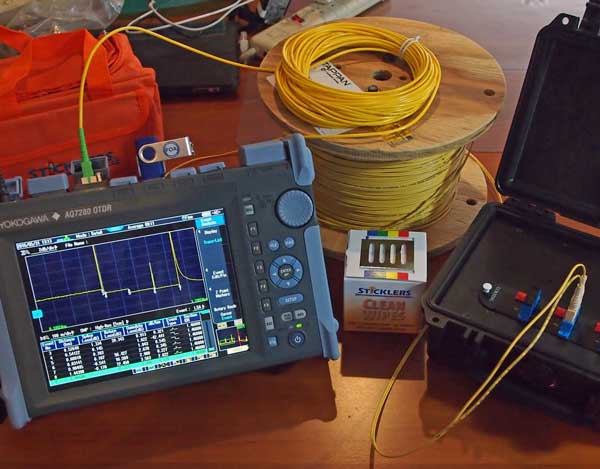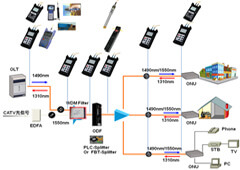Main reasons for integrating an optical measurement system into smart factories
Wiki Article
Comprehending Just How an Optical Measurement System Improves Precision in Industrial Applications
Optical measurement systems play a crucial duty in enhancing precision across numerous commercial applications. By leveraging innovative modern technologies such as laser interferometry and 3D imaging sensing units, these systems supply high-resolution, non-contact dimensions. This ability reduces the danger of damaging sensitive parts while ensuring precision. The influence of these systems prolongs beyond mere dimensions. Discovering their benefits, applications, and future patterns reveals a complicated landscape of advancement and difficulties that values more detailed exam.The Fundamentals of Optical Measurement Systems
Optical measurement systems act as vital tools in numerous industrial applications, providing specific data collection and evaluation. These systems make use of light as a primary methods of measurement, leveraging optical principles to examine measurements, positions, and surface attributes of items. They include components such as lasers, cams, and sensing units, which interact to catch high-resolution pictures and information.The technology allows non-contact dimensions, decreasing the risk of damaging sensitive elements. Optical measurement systems are flexible, locating energy in quality assurance, assembly verification, and dimensional evaluation throughout various sectors. They are particularly efficient in settings where standard measurement techniques may drop short, such as gauging complex geometries or observing quick movements.
As sectors remain to progress, the assimilation of optical measurement systems will remain critical for ensuring accuracy and effectiveness, inevitably boosting product quality and functional performance in various manufacturing processes.
Secret Technologies Behind Optical Measurement
Key modern technologies such as laser interferometry techniques and 3D imaging sensors play a crucial role in the efficiency of optical measurement systems (fibre testing equipment). These innovations enable accurate measurements and thorough analysis in various industrial applications. Recognizing their capabilities is necessary for using the complete capacity of optical measurement systemsLaser Interferometry Techniques
Numerous laser interferometry techniques have actually revolutionized the field of optical measurement, providing unmatched accuracy and precision in various industrial applications. These methods utilize the interference of coherent light waves to measure distance, variation, and surface area abnormalities with nanometer-level precision. Typical techniques include Michelson interferometry, which splits a beam and assesses stage changes, and Fabry-Pérot interferometry, recognized for its high resolution in gauging little modifications. Furthermore, laser Doppler interferometry utilizes frequency shifts to analyze rate, making it invaluable in vibrant measurements. The adaptability of these techniques permits their assimilation into diverse production processes, boosting quality assurance and making sure adherence to strict resistances. Because of this, laser interferometry remains to play an essential function in advancing commercial measurement requirements.3D Imaging Sensors
Developments in measurement modern technology have actually resulted in the development of 3D imaging sensors, which play a significant role in optical measurement systems. These sensors record three-dimensional data with various techniques such as triangulation, time-of-flight, and organized light. By accurately reconstructing the form and measurements of things, 3D imaging sensing units enhance the accuracy of dimensions in industrial applications. They supply real-time responses, promoting high quality control and ensuring that elements satisfy stringent specs. Furthermore, their ability to operate in tough environments, such as differing lighting conditions, makes them invaluable in making processes. As markets progressively embrace automation, the assimilation of 3D imaging sensors into optical measurement systems is expected to drive more improvements in effectiveness and precision.Benefits of Optical Measurement in Sector
Traditional measurement techniques have actually long been the criterion in commercial setups, optical measurement systems offer significant advantages that improve accuracy and effectiveness. These systems use light to catch information, leading to high-resolution dimensions that are frequently unattainable with traditional strategies. The non-contact nature of optical dimensions minimizes the threat of damaging delicate elements throughout the evaluation process. Additionally, the speed of optical dimensions permits quick information acquisition, facilitating prompt decision-making in fast-paced commercial settings.Optical systems are versatile, capable of determining various materials and shapes without the need for considerable recalibration. This convenience adds to improved process and efficiency. Furthermore, the automation potential of optical measurement systems decreases human error, guaranteeing regular quality control. Overall, the assimilation of look here optical measurement innovation represents a dynamic change towards boosted precision and integrity in industrial procedures, eventually resulting in boosted product top quality and functional efficiency.
Applications of Optical Measurement Systems

Optical measurement systems play a crucial function in enhancing production process optimization by giving accurate information for decision-making. These systems ensure quality control guarantee through real-time monitoring and evaluation of manufacturing metrics. As sectors increasingly take on these innovations, their effect on effectiveness and item reliability comes to be obvious.
Manufacturing Process Optimization
Enhancing production process effectiveness is significantly reliant on the combination of optical measurement systems. These systems offer real-time information on numerous criteria, enabling producers to analyze procedures with a high level of precision. By enabling exact dimensions of dimensions, surface attributes, and product residential or commercial properties, optical measurement systems facilitate the identification of ineffectiveness and traffic jams in assembly line. The immediate feedback from these systems empowers designers to make educated decisions, resulting in maximized machining, assembly, and completing procedures. The ability to check problems continually enables for flexible adjustments, minimizing downtime and waste. As industries go for better performance and decreased functional prices, optical measurement systems arise as vital tools for improving production process optimization.
Quality Assurance Guarantee
The combination of optical measurement systems greatly influences top quality control assurance in commercial settings. These systems give exact and non-destructive dimensions, allowing producers to detect issues and discrepancies early in the manufacturing procedure. By using innovative imaging techniques, such as laser triangulation and interferometry, optical measurement systems ensure that elements fulfill stringent specs. This facilitates real-time tracking, lowering waste and minimizing the risk of defective items getting to the market. Furthermore, the information collected can be evaluated to improve manufacturing processes additionally, bring about continuous renovation. Inevitably, the fostering of optical measurement systems boosts reliability and consistency in high quality control, cultivating better confidence amongst stakeholders and clients alike in the end products delivered.Case Studies: Effective Implementations
Countless sectors have actually efficiently incorporated optical measurement systems to boost their functional effectiveness and item high quality. In the automotive sector, a prominent supplier took on a laser triangulation system to keep an eye on the alignment of car elements. This application substantially reduced setting up mistakes, leading to enhanced safety and minimized costs.In the aerospace market, a leading aircraft supplier used optical width for accuracy measurements of turbine blades, accomplishing a reduction in making resistances and much better performance standards.
A consumer electronic devices business executed optical measurement technology throughout the manufacturing of smartphone screens, resulting in enhanced high quality control and a reduction in defective products.
These study highlight just how optical measurement systems not just boost precision yet additionally contribute to general functional performance, showing their value throughout numerous sectors. By dealing with details needs, these systems have confirmed to be indispensable tools in modern commercial applications.
Challenges and Limitations of Optical Measurement
While optical measurement systems use substantial benefits in different commercial applications, they are not without their obstacles and restrictions. One significant concern is sensitivity to environmental conditions, such as temperature fluctuations, humidity, and dust, which can adversely influence measurement precision. In addition, optical systems usually require specific positioning and calibration, making them at risk to human mistake throughout setup and procedure. One more constraint is the capacity for disturbance from ambient light, which can misshape measurements and necessitate complicated filtering strategies. Furthermore, certain materials and surface areas may offer difficulties, as reflective or clear attributes can result in inconsistent analyses. The cost of top quality optical components and systems can likewise be a barrier for some industries, restricting widespread fostering. Specialized training is frequently needed for personnel to properly operate and maintain these systems, including to the general complexity and operational obstacles.Future Fads in Optical Measurement Innovation
As developments in technology proceed to form commercial processes, the future of optical measurement systems is positioned for substantial read more advancement. Emerging trends suggest a change towards improved combination of expert system and device understanding, enabling systems to analyze information in real-time, determine patterns, and improve decision-making processes. Additionally, the growth of miniaturized sensors and progressed optics is anticipated to result in more compact and functional measurement remedies, making them obtainable for a broader series of applications.In addition, the unification of 3D imaging and high-resolution capacities will allow for extraordinary accuracy in measurements, which is essential for sectors such as aerospace and auto. The promote automation and Sector 4.0 will certainly also drive the need for optical measurement systems that can conveniently interface with other modern technologies. As these fads unravel, optical measurement systems will likely come to be important to accomplishing better effectiveness and accuracy across different industrial sectors.

Often Asked Concerns
Exactly How Do Optical Measurement Systems Compare to Standard Measurement Techniques?
Optical measurement systems offer better accuracy and speed contrasted to typical techniques - robotic vision. They minimize human error, improve data collection effectiveness, and provide real-time outcomes, making them progressively chose in various commercial applications for accurate measurementsWhat Industries Benefit the A Lot Of From Optical Measurement Systems?
Optical measurement systems significantly profit sectors such as aerospace, automobile, and electronics. Their capability to give high-precision dimensions boosts quality assurance, reduces manufacturing mistakes, and enhances total effectiveness, making them essential in competitive manufacturing settings.Can Optical Measurement Systems Be Customized for Specific Applications?
Optical measurement systems can undoubtedly be tailored for particular applications. By changing specifications such as wavelength, resolution, and calibration strategies, sectors can customize these systems to satisfy why not try these out one-of-a-kind precision and precision needs properly.What Is the Maintenance Demand for Optical Measurement Systems?
The maintenance requirements for optical measurement systems normally consist of regular calibration, cleansing of optical elements, and software application updates. Following these techniques assurances accuracy, integrity, and longevity of the measurement equipment in different applications.Exactly How Do Ecological Elements Influence Optical Measurement Accuracy?
Ecological elements, such as temperature variations, humidity, and dirt, considerably impact optical measurement accuracy. These components can misshape light paths and disrupt sensing unit analyses, inevitably jeopardizing the dependability and accuracy of dimensions in commercial setups.Report this wiki page